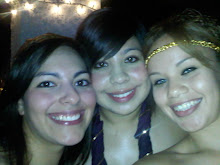
Hunters are portrayed as respecting all animals and showing the importance of its life even in the animal’s death. “Kill the beast by all means, they say, but make it a contest, a ritual, and honour your antagonist for his strength and bravery. Eat him too, after you have vanquished him, in order for his strength and courage to enter you. Look him in the eyes before you kill him, and thank him afterwards. Sing songs about him” (97). The connection that hunters are perceived to have with animals even if their intent is to kill them is, in a sadistic manner, a display of passion and affection. They don’t pick certain animals to love; hunters hold these ideals towards all animals.

I would agree that hunters love animals more since after all activists don’t ever really fight for all animals they fight for a specific type of animal. Also I rarely hear about activists standing up for smaller and what are considered to be ugly animals like rats unlike hunters who honor whatever it is they might kill. When looking at this argument I think of the possibilities of other perspectives portrayed in literature and its effects on the animal cruelty subject. Fiction and poetry, along with non- fiction seem to play an important part in the discussion adding insightfully different ideas and perspectives that at times we forget because “we cannot experience abstractions” (98) and these forms of literature make them realistic even if only for a few minutes.
In Kafka’s, A Report for an Academy we see the effects integrating into the human realm has had on an ape named Red Peter. We look at the story and his detailing of the events and can believe that this is possible but we look at it and can tell that it isn’t a good idea. We learn of the harm done to the ape through his journey and we see what his thoughts were throughout the whole ordeal. “I’ll say it again: imitating human beings was not something which pleased me. I imitated them because I was looking for a way out, for no other reason” (662). It becomes easy to see that what we might think is a good idea can be actually very damaging those who have to undergo the process. This applies to all treatment of animals really, whatever we do to them might seem to be worth something but in reality it might only be harmful. I was annoyed really at what was considered his process towards becoming closer to humans, it consisted of spitting, smoking a pipe, and drinking. Not only does this make me see the stupid things some people would like to see animals do but it makes me think of what separates from animals. If these are the things Red Peter had to learn to integrate into our society is there really much of a difference between humans and animals?

While this fictional work provides insight to an animal’s mind Rilke’s poem The Panther makes us think of what it’s like to be an animal. He chooses to describe a caged animal to emphasize the negative affects our brilliant ideas can have on animals “To him, the world is bars, 100,000 bars, and behind the bars, nothing” (665). While we visit zoos and love believing we’re keeping animals safe in tiny cages they see nothing but a small are that literarily is their whole world. How sad would it be if we were the ones trapped in those small cages for the rest of our lives, how weird that we never think of it that way when we stare at an animal’s amazing beauty as we stand outside the cage. It takes fiction to make the abstracts disappear and that is why they are really helpful for the conversation on animal cruelty.


No comments:
Post a Comment